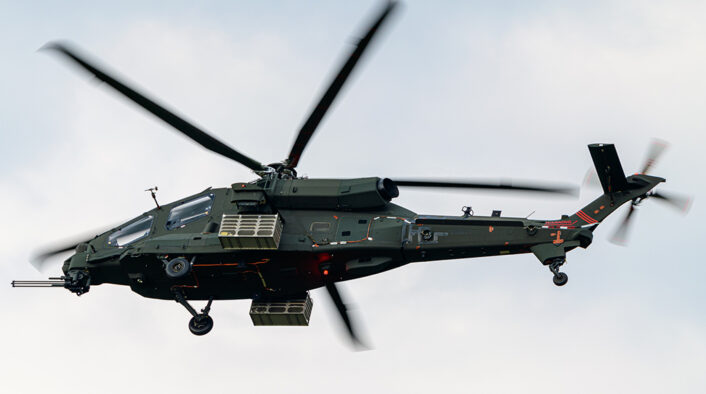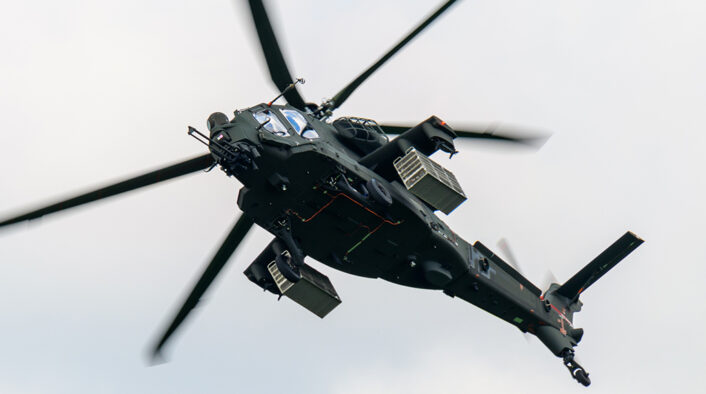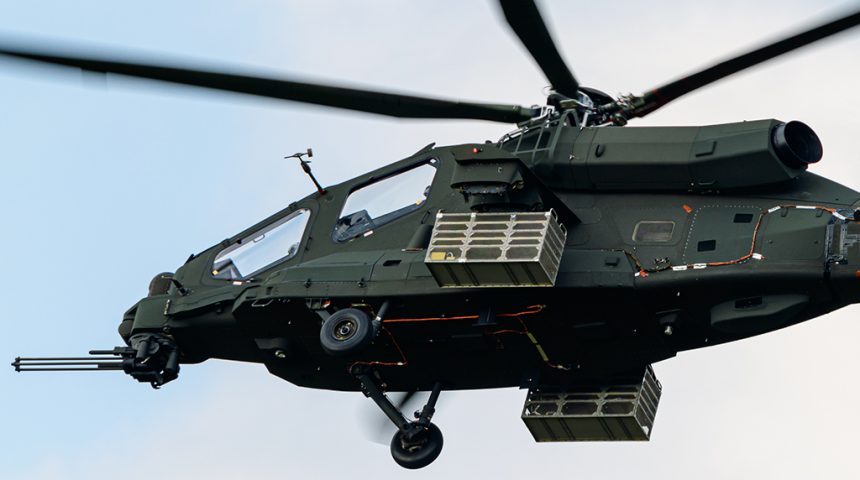The new AW249 NESS (“Fenice”) combat helicopter has deployed to Palma del Río for testing in hot weather.
The first prototype of the new Leonardo AW249 NEES (Nuovo Elicottero da Esplorazione e Scorta / New Exploration and Escort Helicopter), CSX82097, s/n 24001, is currently deployed to Spain to undertake hot weather testing at Palma del Río, near Cordoba.
Como os quedais si os digo que el prototipo #2 del AW249 NEES está en cordoba haciendo ensayos en vuelo? Pues imaginad mi cara ayer cuando veo esto sobre Palma del Río pic.twitter.com/nQU3PCDfup
— Santi Blánquez (@SantiBlanquez) August 2, 2023
The helicopter is the second prototype of the “Fenice” (Italian for “Phoenix”, as the AW249 should be known, as revealed by General Andrea Di Stasio, Commander of the Italian Army Aviation), that carried out its first flight from the Leonardo Helicopters plant in Vergiate, on Mar. 19, 2023, following another prototype that flew the type’s maiden flight in August 2022 (in its primer paint and the experimental serial CSX82069).
The photographs submitted by one of our readers show no significant modifications to the prototype: the only notable detail could be the addition of a real TTS electro-optical/PNVS (Pilot Night Vision System) and what appear to be rectangular devices (most probably used to simulate something else for testing purposes) on the stub wings.

The fuselage and tail boom features lines and red tapes possibly used to attach strain sensors on the surface to monitor the stress on the airframe during the flight.
The AW249 should spend one month in Spain before returning to Italy.
As already explained, the new attack helicopter will replace the AW129 Mangusta, which has been in service with the Italian Army since the 1990s and upgraded throughout the years until the current AH-129D variant. The Army plans to retire the AH-129 from 2025.

Here’s what we explained about the shape of the “Fenice” in our previous story on the type:
Many are considering the AW249 as a copy of the AH-64 Apache, however the two helicopters have very little in common, besides the tandem cockpit configuration. The AW249 is, in fact, a completely different helicopter than its predecessor, the AW129, which was originally designed in the late 1970s as A129 and first flew in 1983: while it leverages the lessons learned with the Mangusta, it features a new airframe, transmission, engines and avionics By the way, the tandem cockpit configuration doesn’t even date back to the Apache, but to the AH-1 Cobra.
Dealing with the engines:
The helicopter is powered by a pair of GE Aviation CT7-8E6 (T700) turboshaft engines, rated at 2,500hp (1,860kW) each and also includes dynamic components from the AW149 transport helicopter. The AW249 has been designed with a maximum take-off weight (MTOW) within the range of 7,500 – 8,000 kg (about the double of the AW129’s MTOW), with the ability to operate in both hot-and-high and cold weather conditions, with a cruising speed of 140kts and a three-hour endurance. The helicopter has been designed also with ship-borne operations in mind.









